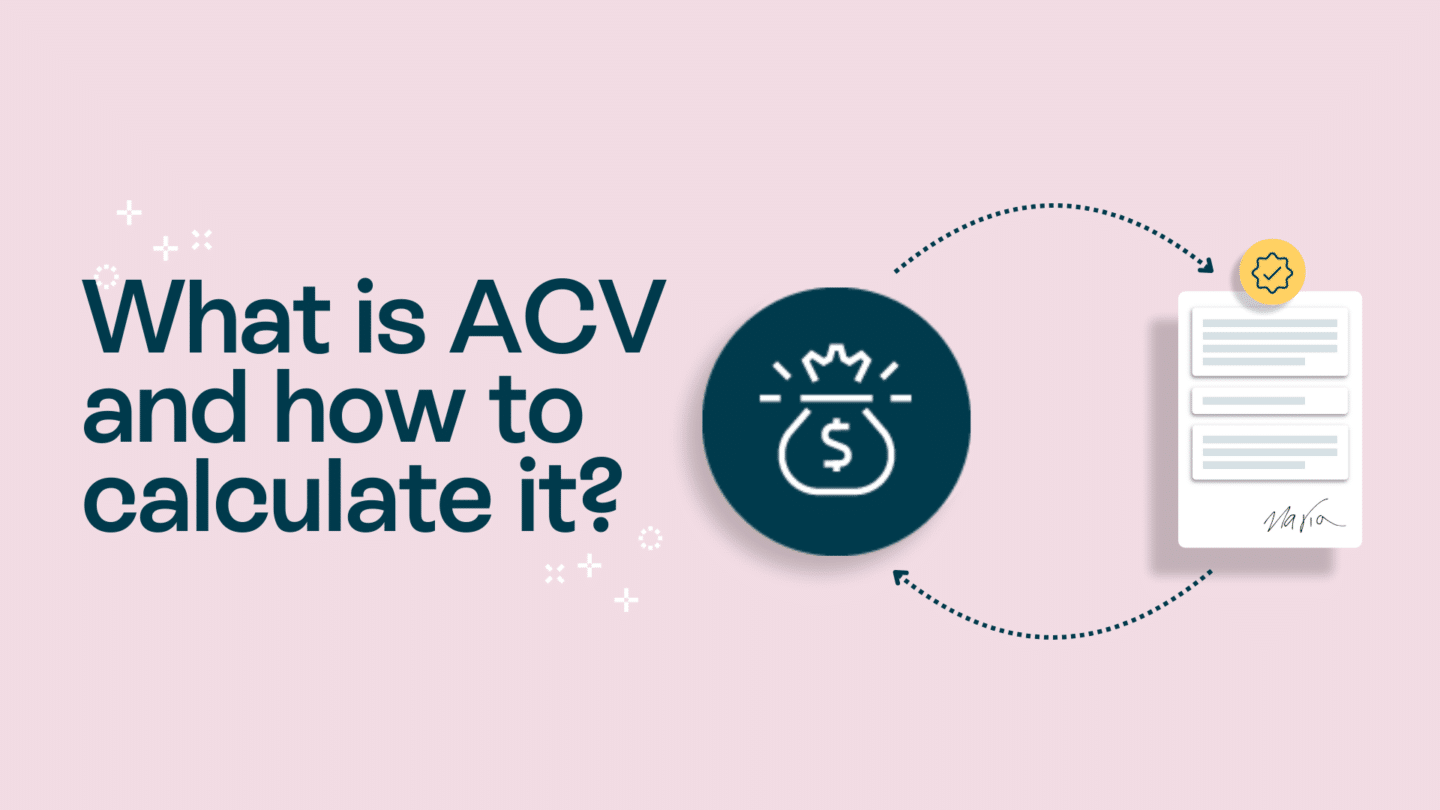Contract lifecycle management – also known as CLM – is a crucial part of any business. But finding out how to get started with it can be a daunting undertaking. That’s why we’ve put this guide together.
Here, you’ll find everything you need to know about contract lifecycle management; from what it is, to the benefits it provides, and how you can get started with it today.
In this guide, we’ll cover:
- What is contract lifecycle management?
- What are the benefits of contract lifecycle management?
- What are the phases of contract lifecycle management?
- What are the benefits of contract lifecycle management software?
- What are some industries that benefit from it?
- What are the best practices for contract lifecycle management?
- How contract lifecycle management improves customer trust
What to consider when choosing a CLM software
So, let’s get this started!
1. What is contract lifecycle management?
Contract lifecycle management (CLM) refers to the process of managing all aspects of a contract, from its initial creation and negotiation through to its eventual expiration or renewal. There’s a lot to this process, including contract drafting, review, approval, execution, monitoring, and analysis.
At its core, contract lifecycle management is designed to help organisations streamline their contract management processes and ensure that they are able to effectively manage their contractual relationships with customers, suppliers, partners, and other stakeholders. By implementing a CLM system, organisations can improve their contract management efficiency, reduce risks, and enhance their overall business performance.
The CLM process typically begins with contract creation, which involves drafting and reviewing the contract terms and conditions. This stage also involves negotiating the terms of the contract with the other party or parties involved. Once the contract terms have been agreed upon, the contract is executed, and the parties involved begin performing their contractual obligations.
During the contract monitoring stage, organisations track and manage the performance of the contract to ensure that both parties are meeting their obligations. This involves monitoring the contract for compliance issues, tracking key performance indicators (KPIs), and identifying any potential risks or issues that may arise.
The final stage of the contract lifecycle management process involves contract analysis, where organisations review the performance of the contract and assess its overall effectiveness. This involves analysing the data collected during the contract monitoring stage and using this information to identify areas for improvement and optimisation.
Read also: What is contract management?: A complete guide
2. What are the benefits of contract lifecycle management?
We can all agree that contract lifecycle management is a crucial part of any business. There are a myriad of reasons why, some of which depends on which industry your organisation operates, and whether it’s B2B or B2C.
But here are just 5 more universal reasons why contract lifecycle management is important:
- Risk management: CLM helps in mitigating financial and legal risks by ensuring that all contracts comply with regulatory requirements and organisational standards. It also helps in identifying potential risks and opportunities in the contract lifecycle.
- Cost savings: Great management can lead to significant cost savings by optimising contract terms and reducing contract cycle times. It helps in identifying areas where terms can be renegotiated and bettered, potentially leading to cost savings.
- Improved efficiency: The contract process is streamlined, reducing cycle times and eliminating bottlenecks. This allows organisations to focus on more strategic tasks and improves overall efficiency.
- Better collaboration: Better collaboration between stakeholders such as legal, procurement, and finance teams is facilitated. It helps in creating a centralised repository of contracts, allowing stakeholders to access and manage contracts from a single location.
- Enhanced visibility: CLM provides enhanced visibility into the entire contract lifecycle, allowing organisations to track contract status, monitor performance, and identify areas of improvement.

3. What are the phases of contract lifecycle management?
Wondering what are the phases of contract lifecycle management? Depending on who you ask, and in which industry they work, you can get slightly different answers to this question. But, generally speaking, there are 6 phases of contract lifecycle management:
- Contract initiation: This is the first phase of the contract lifecycle, where the need for a new contract is identified and the contract request is initiated. This phase may involve the identification of key stakeholders, gathering of requirements, and the creation of a business case to justify the contract.
- Contract drafting: In this phase, the contract is created or drafted. This may involve the negotiation of terms and conditions, the review of legal and regulatory requirements, and the approval of stakeholders.
- Contract review and approval: Once the contract is drafted, it is reviewed by legal and other stakeholders to ensure that it is legally sound and meets the requirements of all parties involved. The contract may be revised or modified as necessary, and final approval is obtained.
- Contract execution: This phase involves the actual signing and execution of the contract. This may involve the exchange of signatures, the recording of the contract in a contract management system, and the distribution of copies to all relevant parties.
- Contract performance and monitoring: Once the contract is executed, it is important to monitor and manage its performance. This involves tracking key metrics, ensuring compliance with contractual obligations, and addressing any issues that arise.
- Contract renewal or termination: As the contract approaches its expiration date, the parties may decide to renew or terminate the agreement. This phase may involve negotiations, the drafting of a new contract, or the termination of the existing contract.
Read also: B2B sales strategies for growing your business in 2023

4. What are some industries that benefit from it?
Almost all industries can benefit from contract lifecycle management software, regardless of whether they operate in the B2B or B2C space. Here are just a few of the industries that can benefit from contract lifecycle management software:
- Financial services: The financial services industry is heavily regulated, and compliance is a top priority. Contract lifecycle management can help financial institutions manage their contracts and ensure they comply with relevant regulations while also mitigating risks. Additionally, CLM can help financial services organisations reduce costs associated with contract management by automating tasks such as contract creation, negotiation, and renewal.
- Heavy manufacturing: The manufacturing industry relies heavily on contracts with suppliers, distributors, and other partners. Contract lifecycle management can help manufacturing organisations manage these contracts more effectively by providing greater visibility into contract terms and obligations, improving contract compliance, and streamlining contract administration. With CLM, manufacturing organisations can reduce the risk of supply chain disruptions and improve their overall operational efficiency.
- SaaS tech: When it comes to SaaS, you can live or die by contract renewals. After all, the longer a customer stays with you, the more profit you make. Having proper contract lifecycle management processes in place can help with renewals, negotiations, and, crucially, selling more. SaaS is one of the industries that can truly benefit from contract lifecycle management.
- Insurance: Insurance companies use contracts for everything from policy agreements to vendor contracts. Contract lifecycle management can help ensure that all contracts are managed efficiently, reducing operational costs and improving compliance. You can even make use of templates to ensure that you have a wide range of contracts to go, depending on the underwriting process.
- NGOs: NGOs often find themselves having to sign lots of contracts internationally, and, depending on their field of work, at short notice too. Contract lifecycle management can cover all of this, from fundraising agreements to vendor contracts. It can help ensure that all contracts are managed efficiently, reducing operational costs and improving compliance across jurisdictions.
These are just 5 examples. Any industry that uses contracts a lot can benefit from contract lifecycle management.
Read also: A Basic Guide on Electronic Signatures and What Makes Them Legal

5. What are the best practices for contract lifecycle management?
When setting up contract lifecycle management, it can be hard to know where to begin. Here are just a few of our top tips to help you get started:
- Establish a clear contract management process – A well-defined process for contract creation, review, approval, execution, and ongoing management is crucial to ensure all contracts are managed consistently and effectively.
- Define roles and responsibilities – Clearly defining roles and responsibilities for everyone involved in the contract management process ensures everyone knows what’s expected of them and helps avoid confusion or misunderstandings.
- Use contract management software – Contract management software can automate and streamline many aspects of the contract management process, including contract creation, review, approval, and monitoring.
- Set up a contract repository – A centralised location where contracts are stored and easily accessible makes it easier to track contract status, deadlines, and other important information.
- Implement contract tracking and reporting – Tracking and reporting ensure that contracts are managed effectively and everyone involved meets their obligations. This includes tracking contract status, deadlines, and other important milestones.
- Ensure contract compliance – Avoid legal and financial risks by monitoring compliance with contractual obligations and taking action when necessary.
- Establish clear communication channels – Ensure all parties involved in the contract management process are informed and up-to-date on contract status, changes, and other important information.

6. How contract lifecycle management software improves customer trust
Have you ever had a bad experience with a company’s contract management? Maybe you had a hard time signing electronic contracts, or you were sent an old contract. In cases like these, a company’s poor contract practices could become its downfall. Here’s how CLM software can change that.
- Faster document turnaround: Contract lifecycle management tools help speed up the document turnaround period. It usually takes around 20-30 days for a company to get a contract completed, finalised, and signed. CLM tools are great because they can cut that time significantly. Because it’s also a great hybrid work tool, it doesn’t matter where the client or contractor might be. You can get documents finalised and signed online, increasing speed and efficiency. The faster you get contracts and documents done, the happier your clients will be and the sooner you can start the relationship.
- Have more reliable contracts: Implementing a contract lifecycle management system will also have more reliable and up-to-date contracts. Giving a customer an out-of-date contract will present many challenges to the relationship. In the best-case scenario, you’ll have to update it and go through the tedious contract lifecycle again. Worst-case scenario, you run on a faulty contract, which could present problems for you and your customer. This will affect the relationship and a client’s trust in you as a service provider.
- Word-of-mouth growth: Word of mouth remains one of the best ways to grow a brand. There are a few ways your CLM software could help you improve word of mouth. For one, by having excellent contract lifecycle management processes, you improve the customer journey and give people more reason to talk to their friends about how smooth working with you is.
- Fewer human errors in your contracts: The contract lifecycle management process removes any human error that could reflect poorly on the company. Whether typographical errors or poor explanation of terms, you can minimise or avoid them if people automate parts of the contract execution process.
- Avoid potential legal issues: When companies have poor contract management practices, it could result in legal issues. Small or big, a legal issue could present many problems to a company’s reputation. Projects and agreements should be black and white and as clear as day one. By having a better contract lifecycle management process to streamline contract revisions and compliance, you’ll be in a better place both from a legal and PR standpoint.

7. What to consider when choosing a CLM software
There are a lot of things you need to consider when choosing the right CLM software for you and your business needs. Now, it’s up to you to decide which criteria you’ll measure each bit of kit by, but here are our suggestions for a few things to consider when choosing the right CLM software for you:
Automation and cost reduction: Does the software automate in the way you need it to? Does it reduce your overall costs through the elimination of manual work?
Better compliance: Does it aid greater, more secure compliance with key laws and regulations?
Deeper insights: Does the software give you more insights into your contracts? Is it easy to interpret and understand these insights?
Harmony with workflows: Does the software match with your existing workflows in a natural way? How many changes would you have to make to your existing workflows in order for the CLM software to work?
These are just a few of the things to consider when choosing the right CLM software for you.
The key takeaways
Contract Lifecycle Management (CLM) is an essential process for businesses, ensuring that contracts are efficiently and effectively managed throughout their entire lifecycle. By implementing a CLM system, organisations can streamline their contract management processes, improve their business performance, reduce risks, and save costs.
The phases of the contract lifecycle include initiation, drafting, review and approval, execution, performance and monitoring, and renewal or termination. There are lots of benefits of contract lifecycle management too. These include improved compliance, increased efficiency, enhanced collaboration, better visibility, and improved analytics.
Implementing a contract lifecycle management system might be daunting, but by following best practices and choosing the right software, businesses can optimise their contract management and reap the benefits. The benefits of CLM are universal across most industries, making it a crucial process for all types of businesses, regardless of their size or industry.
So, if you’re looking to get started with CLM, click here to find out more.






